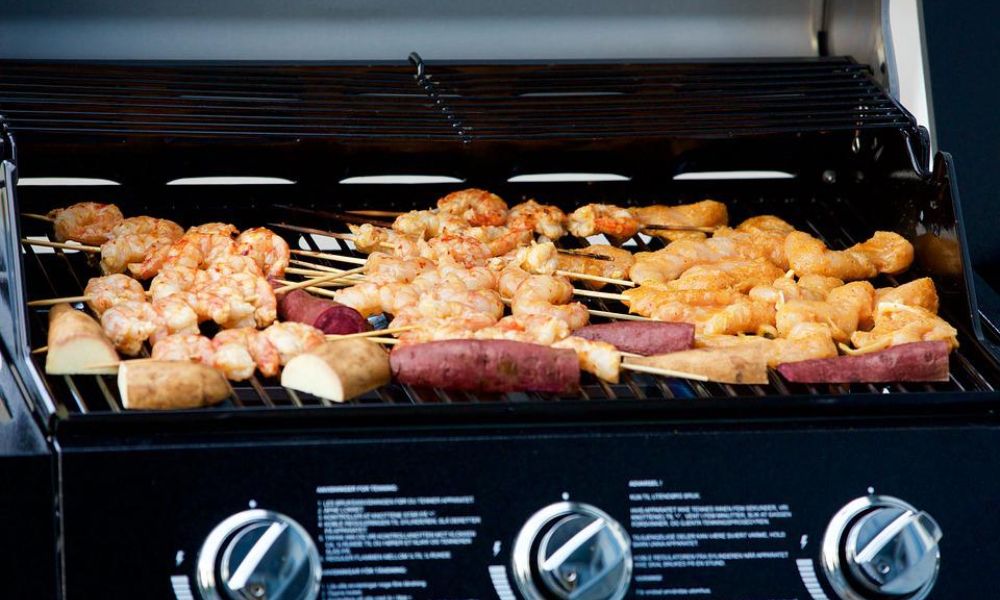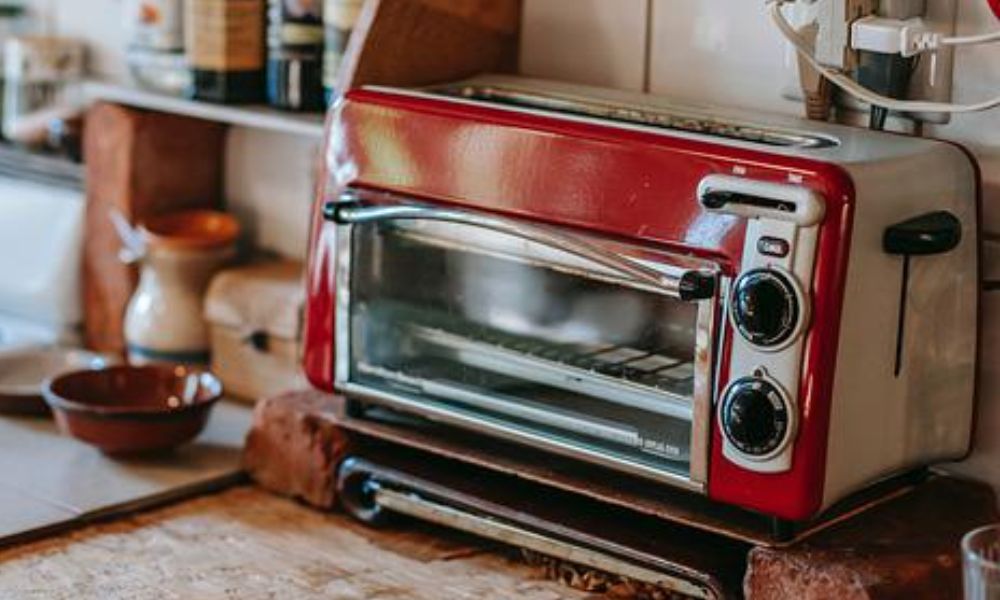There are numerous types of ovens on the market today, and we have numerous questions. What exactly is a grill oven, and how does it differ from a standard oven? If you want to know the answer to this question and more information about grill ovens, keep reading.
So, what exactly is a grill oven? A grill oven cooks the same way as a regular oven, and we can use it to heat, reheat, and defrost food. It now includes a grill plate for browning and crisping food. Using both methods simultaneously allows for faster cooking, browning or crisping the outside while cooking the inside.
The benefit of adding a grill to your oven is the increased amount of food you can cook with it. A grill oven can function as a regular oven without the grill.
This means you can heat and reheat food while also defrosting frozen foods. You can still prepare pasta dishes, fluffy rice, scrambled eggs, soups, and many other dishes.
However, the addition of the grill allows you to cook some things even better and expand your menu options.
How to Use a Grill Oven?
Here is all you need to know.
Check your Oven’s Features
Before using the grill function, familiarize yourself with your oven’s features. Check the manual to see if you should keep the door open or closed, as this varies from manufacturer to manufacturer. Suppose you need to open the door while grilling; it only leaves it open a small amount.
You should be able to pry the door and leave it open a few inches, allowing air to circulate and promoting even coloration of your food. You should be able to use the grill with the door closed if your oven has a convection or fan setting. In this case, the fan provides the necessary airflow to ensure that heat is distributed evenly and food is evenly browned.
Keep your Gaze Fixed on the Grill
A grill, unlike a conventional oven, necessitates constant supervision. Because of the high level of heat used by your grill, there is a much higher risk of food burning, so keep a supply on hand at all times. The grill on your oven can also be a hazard to children, especially if the door is left ajar. Do not be tempted to leave your grill unattended.
Use the Appropriate Temperature
You can set a precise temperature for broiling on some ranges, and others only have low and high broil settings, making it a little more difficult to cook foods properly. Low broil temperatures range between 400° and 450° F, while high broil temperatures range between 450° and 550° F.
Low broil is best for thicker foods that require a high internal temperature, such as chicken breasts. That setting, like your grill, will produce nice, crisp skin while still allowing the food to cook through without burning. Use high broil to get a nice quick char outside of sliced veggies like eggplant or zucchini without overcooking.
Choose the Proper Rack Position
Broiling, like grilling, requires a delicate balance. Food can brown or burn on the outside before it’s cooked through if it’s too close to a direct flame. Worse, it has the potential to ignite and start a fire. If the temperature of the food is too low, the broiling element will not be able to work its magic, and your food will look baked or roasted. The majority of ovens have four to seven rack positions. The closer the food is to the broiling element, the higher the rack position. Check your owner’s manual to see which rack positions your range manufacturer recommends for broiling various foods, and try those first. If you are unhappy with the results, try different rack positions.
Examine the Door
Follow the manufacturer’s instructions for broiling with the door open or closed. However, you will not need to leave the oven door completely open. Begin with the door closed, then slowly pry it open until you feel the door stop flowing freely—about 4 inches. In this position, the door will remain open on its own. This opening allows air to circulate in some ranges, promoting even browning. Keep an eye on things if you’re broiling with the oven door open, and keep young children and pets out of the kitchen.
Use Convection if your Oven has it
A convection setting activates a fan in the back of the oven to evenly distribute hot air. Try using your range’s convection-broil setting to help foods crisp up and brown evenly, just like they would on a grill. Because the fan circulates the heat evenly, most manufacturers recommend keeping the door closed when convection-broiling.
Use the Proper Pan
Always use the broil pan that came with your oven or a suitable replacement recommended by the range manufacturer when broiling. Broilers generate high temperatures, causing fat in foods to render quickly. Broiler pans are specifically designed to allow fat to drip away and not accidentally ignite. They have a solid lower pan that collects drippings and a slotted upper pan that allows rendered fat to drain. This occurs naturally on a grill as fat drips away from the food as it cooks through the grates.
Using an Oven Rather than a Grill (BBQ)
Grilled Raw Steak
The weather in the UK can be unpredictable during the summer, so it’s nice to know that even if it starts to rain, you can move the party indoors and grill your food in the oven.
While cooking indoors may not be as appealing as barbecuing in the sun, it is often necessary due to weather constraints. It’s also useful to have an extra grill on hand if there’s no room on the grill. The oven is essentially an indoor gas grill.
How to Use a Grill as a BBQ?
Turning your grill to high and placing your grill pan close to the top is all it takes to use it as a BBQ. To replicate the direct heat of a traditional BBQ, keep your food close to the heat source, and this will ensure you get the trademark browning and coloring on your food.
You’ll want all the grease and fat from the food to drip away, just like when you’re grilling outside, but you don’t want to get your oven too dirty. This is why a grilling pan is always recommended. Make sure you don’t leave the grill unattended. Although it may be safe to do this outside (when no children are present), doing so inside may result in burnt food and a lot of smoke.
How to Cook with a Cast-Iron Pan on a Grill?
- Place the oven rack at the bottom of the oven on the lowest setting. Although cast-iron pans are typically deep, they do not allow fat to be easily drained away, so keep the pan as low as possible.
- Preheat the grill pan before adding any food to ensure a nice searing on the surface of the meat. Set the grill to high and place the pan on the rack for at least 10 minutes before adding any food.
- Cook your food as you would on an outdoor grill, turning halfway through. Depending on the features of your oven, you may need to open a window or turn on an extractor fan to get rid of any smoke.
- After you’ve finished cooking, set aside the cast-iron pan to cool; then, to prevent rust from forming, clean it with hot water and dry it with a tea towel. Wipe the pan lightly with vegetable oil and season it in a hot oven for an hour. This will increase its effectiveness and lifespan.
What is the Distinction Between an Oven Grill and a BBQ?
Differences
There are a few obvious differences between a BBQ grill and an oven grill: your oven acts as a thermostat, allowing you to control the cooking temperature.
While gas grills have this feature, charcoal grills do not, making temperature control much more difficult. While the ability to control the temperature at which your food cooks is often a blessing, it can also be a curse.
Regular ovens shut down when they reach their optimal temperature, usually above 250oC. This will result in any food inside the oven cooking in its own steam, which you don’t want to happen when grilling. You want your food to be constantly hot, straight from the grill.
Keep the oven door slightly open to keep the grill on your oven burning. This increases airflow, allowing heat to escape and preventing the oven from reaching its maximum temperature and shutting down. This means that your food will burn on the grill instead of baking in the oven.
Similarities
Your domestic oven may not provide the desired charcoal flavor of traditional BBQs, but it does provide a versatile and simple method of enjoying grilled food.
Yes, they may appear completely different, but your kitchen oven has a lot in common with an outdoor grill.
Both your BBQ and your oven’s grill foods use high heat to grill foods.
To avoid overcooking and burning the food, both appliances require the same careful attention from a watchful eye.
Perhaps most importantly, they are both capable of producing delectable chargrilled food.
Conclusion
we should not limit grilling to the warm summer or homes with outdoor space for a grill! You can enjoy smoky, charred dishes all year long if you learn to grill in your oven. You can use your oven in this way. We hope that you have now know how you can make use of an oven grill.

